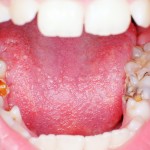
The lining of cavities following caries removal has been recommended for decades and with the increase in use conservative approaches such as selective of stepwise removal of caries the use of calcium hydroxide as a lining continues to be widely used. Calcium hydroxides alkalinity, biocompatibility, remineralising and bacterial reducing effects are reason for use although evidence suggest that simply achieving a good cavity seal can inactivate carious lesions.
The aim of this review was to assess whether the use of calcium hydroxide (CH) liner improves the clinical success in the treatment of deep caries lesions of primary and permanent teeth.
Methods
Searches were conducted in the PubMed /Medline, Lilacs, IBECS, Web of Science, BBO, Scopus, SciELO and The Cochrane Library. Prospective or retrospective clinical trials in patients with deep carious lesions treated with or without calcium hydroxide liner were considered. Data was extracted by two reviewers and study quality and risk of bias assessed independently by two reviews using the Cochrane tool. Meta-analysis was conducted for randomised controlled trials with at least 12 months follow up using a fixed effects model.
Results
- 17 studies were included, 15 were conducted in primary teeth and 2 in permanent teeth.
- 16 studies were randomised controlled trials.
- Follow up periods ranged for 3-71 months.
- With the exception of 1 trial in permanent teeth which was considered to be at low risk of bias all the other included studied has at least one domain that was considered to be at high risk of bias.
- 6 trials in primary teeth contributed to the meta-analysis
- CH demonstrated similar clinical success to adhesive systems, Risk difference (RD)= 0.06 (95%CI; -0.01 to 0.13) [ 4 studies].
- For CH v glass-ionomer cements RD = 0.10 (95%CI; -0.01 to 0.22) [2 studies].
- Compared with self-etch adhesives, RD = 0.01 (95%CI; -0.04 to 0.04)
Conclusions
The authors concluded: –
Although CH liner is commonly used by clinicians in deep carious lesion treatments, the available literature demonstrated that this material has no beneficial influence on the clinical success of selective or stepwise removal of carious tissue. For primary teeth, the level of evidence was moderate when CH liner was compared with GIC, and low when it was compared with inert materials or adhesive systems. For permanent teeth, evidence of very low quality indicated that CH liner would have no effect on clinical success of deep caries lesion treatments. Further long-term and well-designed RCT are needed to confirm whether the clinical success achieved with CH liner and control materials remains similar over time.
Comments
A wide range of databases have been searched for this review. Although given that 16 of the studies were randomised controlled trials (RCTs) the decision to include just one retrospective study seems unnecessary. For while it was the largest study available its design increases its risk of bias and it was not included in the meta-analysis. The risk of bias assessment indicates that all but one study conducted in permanent teeth had at least one domain of the Cochrane tool considered to be at high risk of bias. It is also of interest to note that a 2015 review of this topic by Schwendicke et al (Dental Elf – 22nd Sept 2015) only included 3 RCTs and only 2 of the 17 studies included here were published after this date. This difference is mainly due to Schwendicke et al restricting inclusion to 12 months follow up.
Both reviews suggest that the findings indicate that the linings did not have strong evidence to recommend their use. However, the quality of the available evidence is not high and particularly limited for permanent teeth, which were not considered at all in the Schwendicke et al review. Consequently there is a need for well-conducted and reported studies with appropriate sample sizes to provide higher quality evidence on this question.
Links
Primary Paper
da Rosa WLO, Lima VP, Moraes RR, Piva E, da Silva AF. Is a calcium hydroxide liner necessary in the treatment of deep caries lesions? A systematic review and meta-analysis. Int Endod J. 2018 Nov 2. doi: 10.1111/iej.13034. [Epub ahead of print] Review. PubMed PMID: 30387864.
Other references
Dental Elf – 22nd Sept 2015
